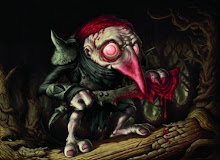Chris Volstad tosses another dud.
Volstad had his second bad outing in a row and the second outing in the season in which he's given up five or more runs. A look at the peripheral stats shows part of the problem: Volstad has struck out only two batters his last 9 1/3 innings (two starts) and has given up two more home runs in the process, putting his season total at 14. Tonight he wasn't able to place his pitches, so despite a fastball that sat 91-93 MPH consistently, occasionally touching 94 MPH, he couldn't get the pitches over enough and fell behind in too many counts. He stayed mostly with the fastball because hitters weren't offering at his breaking balls. Let's take a look at my first foray into pitch f/x charts. All charts here courtesy of Brooks Baseball's Pitch f/x tool.
Here is Volstad's strikezone plot, with pitch types indicated. There are some random choices for pitch types that probably weren't the ones he threw. In particular, the "slider" was most likely a curveball and the the fastballs were likely more decently split between two- and four-seamer.
Now, here's the same chart indicating pitch results.
The charts show what one could tell empirically by watching the game. Volstad was a good deal out of control tonight, unable to pound the lower half of the zone like he usually does. His pitches tonight were scattered up and down the zone, and Red Sox hitters knew it; they laid off the majority of the pitches out of the zone, including almost all of Volstad's curveballs, and forced him to keep it in the strike zone, where they were able to get good contact on him.
Despite the erratic location and the need to throw within the strike zone, the Red Sox didn't pound him with big extra base hits. Only two of the nine hits Volstad allowed were for extra-bases, including David Ortiz's home run. So while they were certainly making good contact on Volstad and taking advantage of the juicky fastballs he was tossing high in the zone, they weren't hitting him all that hard, though I recall many of these singles being line drive hits. Hits such as Nick Green's infield single that squirted past Dan Uggla and Hanley Ramirez, however, point towards some "hitting it where they ain't" type luck.
Volstad has improved as more of a strikeout pitcher, but he still requires a lot from his infield defense. With his work more pitch-to-contact than other guys in the rotation like Ricky Nolasco and Josh Johnson, it's imperative that Volstad keep the ball down in the strike zone to be effective. If he can't locate and begins to throw too many belt-high strikes, that's when the opposing team's swings get a bit more effective.
Marlins pitchers need to learn to hold runners.
Seems like this has been a problem all season long. The Marlins are tied with, ironically enough, the Red Sox with the most stolen bases allowed in the majors, and teams have scouted and used that knowledge to perfection. This development is due to two factors: 1) Marlins pitchers apparently have been slow to the plate out of the stretch; 2) Marlins catchers haven't made good enough throws.
My initial inclination would be to blame the first factor primarily. John Baker and Ronny Paulino have done a serviceable job behind the plate, but are not the strongest of arms. However, the team's pitching staff has definitely appeared slow to the plate and somewhat indifferent to runners on first. Truthfully though, I have no statistics to back this up, so while I make this claim, a more thorough study using Pitch f/x may be in line. Does anybody have a value for the average time to the plate for major league pitchers?







No comments:
Post a Comment